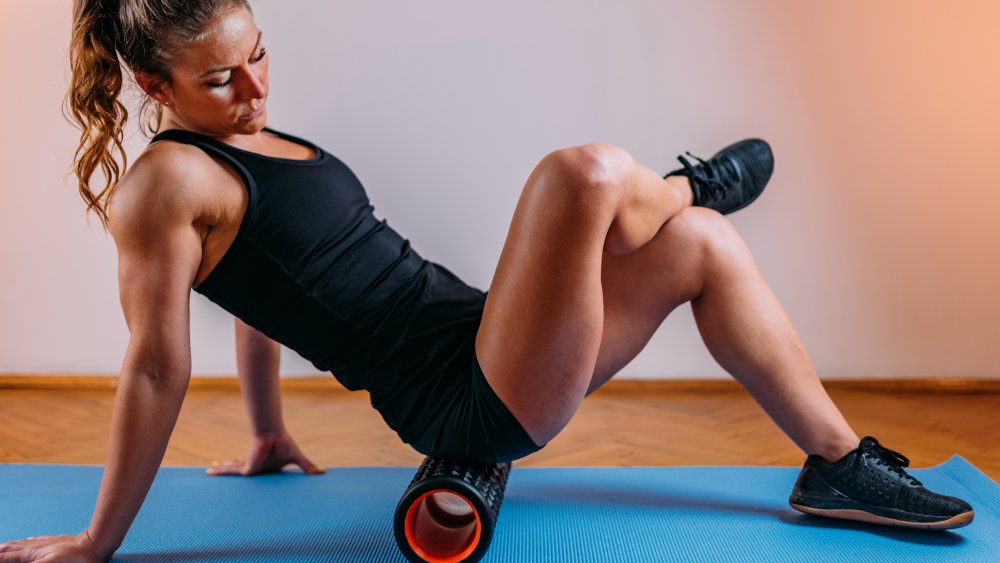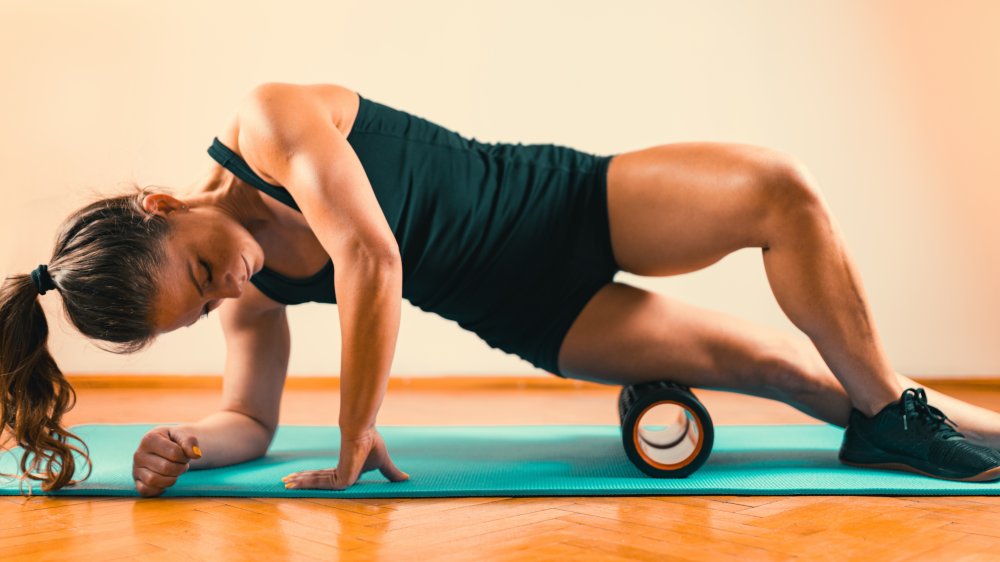This Is Why You Should Start Using A Foam Roller During Your Workout
Those interested in fitness will probably have noticed that foam rollers are seriously trending. According to Michael Bento, a personal trainer at Harvard-affiliated Massachusetts General Hospital, the reason people are beginning to incorporate them into their workouts is that they offer many different benefits, particularly when it comes to stretching and range of motion. "Foam rolling seems to make muscles more receptive to stretching and moving," Bento told Harvard Health Publishing. "It's the best thing I've found to make people feel better immediately in the 25 years I've been doing this," he continued. But are the other benefits of using a foam roller?
According to Insider, foam rollers are used as a method of self-massage, which is often referred to as myofascial foam rolling, which can help with muscle soreness. "When connective tissue gets bound, tight, or rigid, important nutrients, hydration, blood flow, and circulation can be restricted," Joy Puleo, Program Manager at Balanced Body Education, explained. "Foam rolling is an active way to break up some of the mechanical tightness of the connective tissue and help alleviate these issues."
Foam rolling can alleviate muscle soreness, back pain, and more
Better still, foam rolling can help with back pain and your posture. As Lauren Roxburgh, a certified Pilates instructor and author of Taller, Slimmer, Younger: 21 Days to a Foam Roller Physique, explained to Prevention, "You can use the roller as a tool to release tension in the upper back, roll out the kinks, and help get your shoulders aligned." This is particularly important in today's digital world where so many of us spend our days sitting and hunching. "This constant slumping can create stiffness and tightness over time, not to mention postural imbalances," said Roxburgh.
The best part? You can reap the benefits of foam rolling on almost every part of your body, targeting specific pain points if necessary — just roll with it. "You just want to avoid sensitive parts of the body where nerves and blood vessels lie close to the skin like your neck, abdomen, and groin," Sarah Kostyukovsky, a physical therapist at Physio Logic in New York, warned Women's Health.


